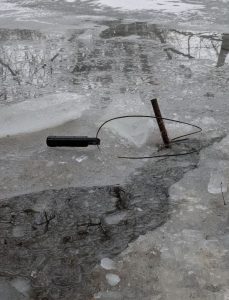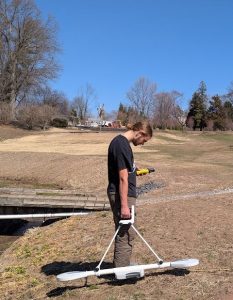It’s nice to see the end of the winter (and digging loggers out of the ice to download data).
But it has clearly been a heavy salting year for our area streams. Most of the area streams I am monitoring are above the aquatic life standard. This increase is also a concern for future drinking water salt levels. One stream immediately downstream of a large mall parking lot is seeing conductivity levels near sea water. All three of these streams are in highly urbanized areas, but the proximity to the parking lot and the large size made this stream the saltiest.
Even between salting events, the conductivity is higher than last year.
I thought I would try looking for salt storage adjacent to streams or parking lots using and electomagnetic profiler, working with undergraduate assistant Lucas Oberholtzer-Hess. However, we found significant urban interference with the signals and no clear salt storage signal in the two sites we surveyed. Cars in parking lots are an example interference.
Undergraduate assistant Katie Alexandrenko finished analyzing the samples the watersheds have been collecting for the past 10 years, with one last round this winter. We saw higher salt concentrations than any other year!




